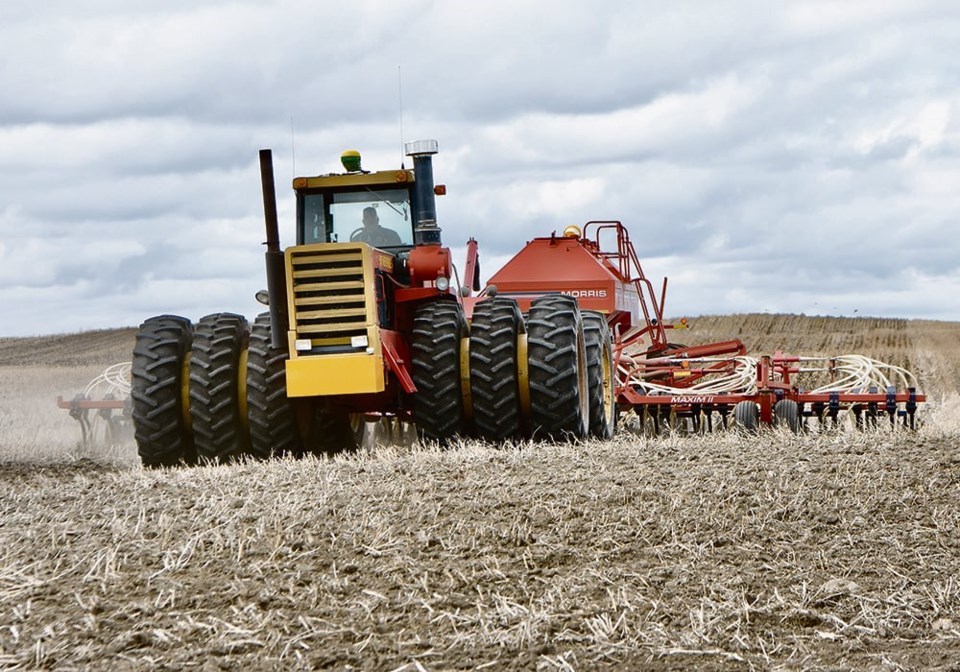SASKATOON — Agriculture Canada has increased its estimate for 2024-25 canola ending stocks, but analysts think it didn’t go far enough.
That is due in a large part to an increase in carry-in, which is the result of lower export expectations for the current 2023-24 crop year.
The federal department reduced its 2023-24 export forecast by one million tonnes to six million tonnes.
“Those ending stocks needed to be increased because the export pace has been abysmal,” said MarketsFarm analyst Bruce Burnett.
The government had been forecasting seven million tonnes of exports.
“Just mathematically there was no way we’re going to hit those numbers,” he said.
Agriculture Canada’s new canola carryout number for 2023-24 is 2.55 million tonnes, up from two million tonnes last month.
That number spills over as the carry-in for the 2024-25 crop, resulting in larger estimated ending stocks at the end of the upcoming crop year.
The 2024-25 ending stocks would be even higher had the government boosted its production estimate due to widespread early-season rainfall.
However, it kept production numbers unchanged for all principal crops.
Burnett said the government appears to be waiting for Statistics Canada’s production estimate.
“They’re not going to move those numbers until we get further along into the growing season,” he said.
However, analysts are not waiting. Mercantile Consulting Venture provided its thoughts on the 2024-25 canola supply/demand picture in a recent market outlook for SaskCanola.
It is forecasting 19.47 million tonnes of production compared to Agriculture Canada’s 18.1 million tonnes.
“Conditions are vastly improved, particularly in Saskatchewan and Alberta,” said Marlene Boersch, Mercantile’s managing partner.
She may bump her number up further, but it’s a little too soon for that because much of the crop is not in the ground or has not yet germinated.
Mercantile also has a higher carry-in of 2.79 million tonnes due to the lacklustre 2023-24 export program.
The upshot is that her carryout forecast is 3.2 million tonnes compared to Agriculture Canada’s new number of 2.5 million tonnes.
That would be a burdensome carryout compared to recent history.
Burnett thinks Mercantile’s carryout number is feasible due to improved production prospects.
And that is despite him believing that Agriculture Canada’s 2024-25 export forecast of 6.9 million tonnes is too low.
“I’m probably a little more optimistic on canola exports recovering,” he said.
“The price for canola right now is starting to become very competitive globally.”
Boersch is forecasting 7.5 million tonnes of exports in 2024-25.
“Europe seems to be reviving a little bit for us, so if we can count on some exports to Europe, that would be helpful,” she said.
Burnett noted that Australia’s crop is coming into question as the world transitions from an El Nino to a La Nina weather cycle.
The U.S. National Oceanic and Atmospheric Administration said there is a 49 per cent chance of La Nina developing in the June-August period and a 69 per cent probability of it forming in the July-September timeframe.
Reuters reports that it is already dry in South Australia and Western Australia, which has some farmers pivoting to wheat and barley.
Rod Baker, an analyst at Australian Crop Forecasters, told Reuters that he expects acres to fall six per cent from last year to 7.66 million acres and production to drop five per cent to 5.4 million tonnes.
Burnett said it is “early days” for the Australian crop and a lot can change, but it is worth keeping an eye on in the months ahead.
Contact [email protected]

